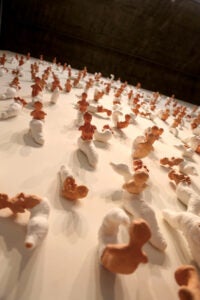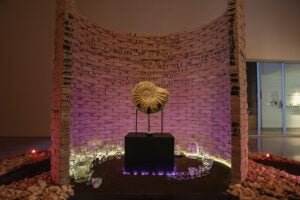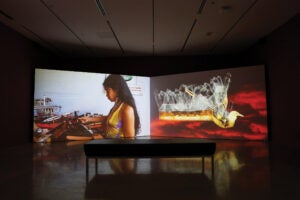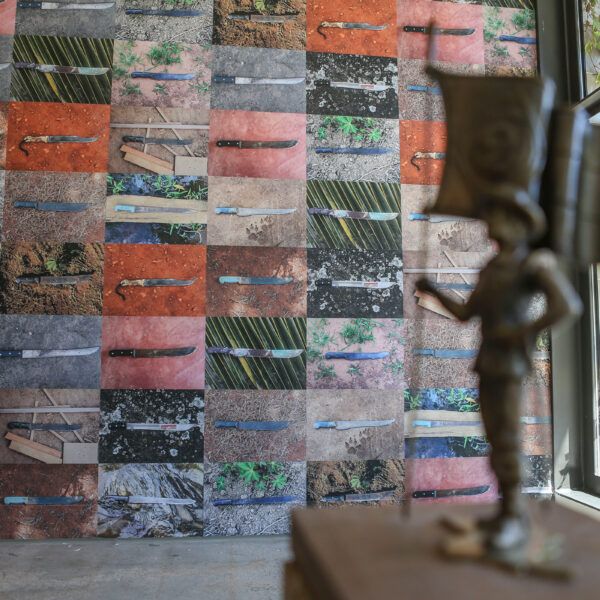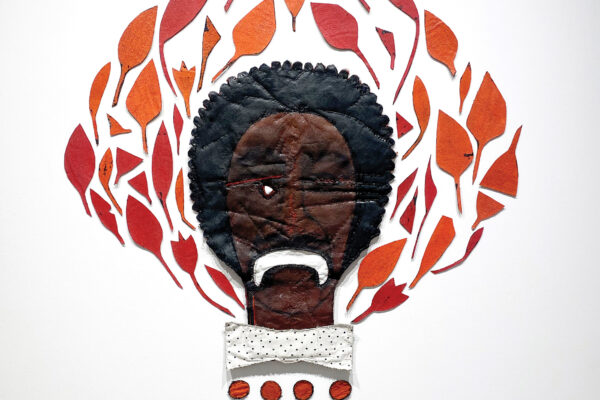Rocks, dirt and branded petrified wood fill the main gallery of the Visual Arts Center a week before public unveiling of its latest exhibition. Castiel Vitorino Brasileiro moves about the room and references her sketches taped on the walls.
Less than a mile east of the Blanton Museum of Art, the VAC shines a light on Brazilian art in their new exhibition “Social Fabric: Art and Activism in Contemporary Brazil.” The show is open to the public and will occupy the first floor and part of the second-floor galleries through March 2023.
The center’s public affairs specialist, Jennifer Irving, says this is the biggest show the VAC has ever done. Since it opened in 2010, its focus has been to showcase graduate student thesis work and function as a student gallery for the College of Fine Arts.
“This is a big deal. It’s a transition show for the VAC because it’s going to be up through March,” Irving says. “And after it leaves the VAC, it will go to São Paulo and show there, which is really cool.”
Maria Emilia Fernandez, the assistant curator of the VAC, says the show first came to be in 2019, when she was still a graduate student. It was planned as a visual component for the UT-hosted Brazilian Studies Association Conference (BRASA), scheduled for 2020. A smaller version of the show would accompany the lineup of academic guest speakers addressing social justice issues in Brazil. However, when the pandemic hit, the conference was delayed. “Social Fabric’s” co-curators, VAC director MacKenzie Stevens and assistant professor Adele Nelson, took advantage of the extra time to create a more ambitious exhibition.
While in lockdown, Stevens visited 300 artist studios via Zoom. She met painters, photographers, sculptors and cinematographers from Rio de Janeiro and São Paulo and narrowed the choices to 10 participants, including Afro-Brazilian visual artist, educator, and curator Rosana Paulino.
As a new staff member of the VAC, Fernandez helps translate the artists’ intentions for visitors. She provides historical context and social narrative for the show, threading activism into visual culture.
“What it is trying to do is see how artists are dealing with longer histories of racism, discrimination, and oppression in Brazil, heightened by the current president,” Fernandez says.
